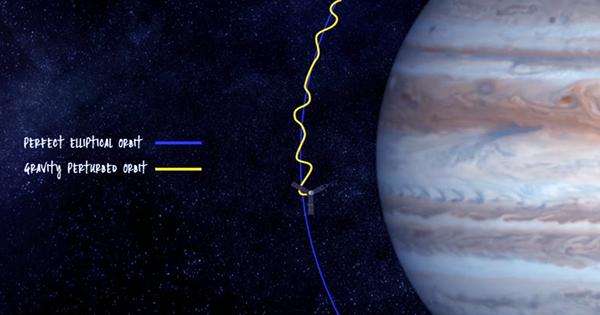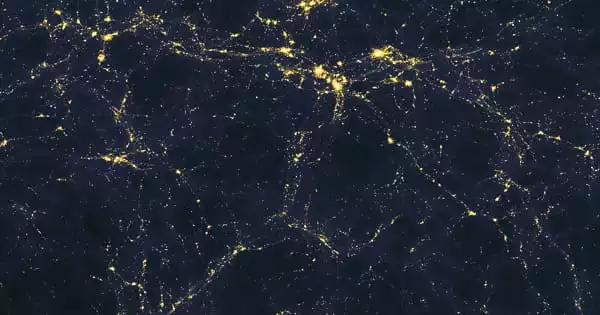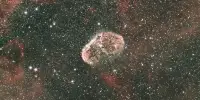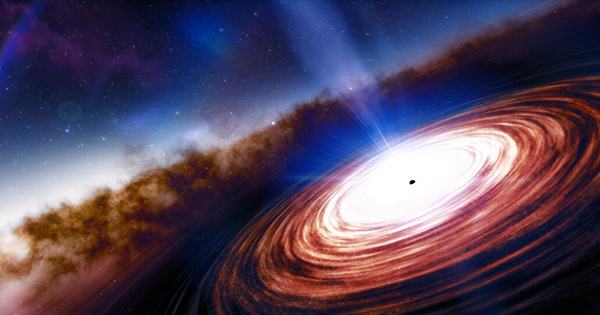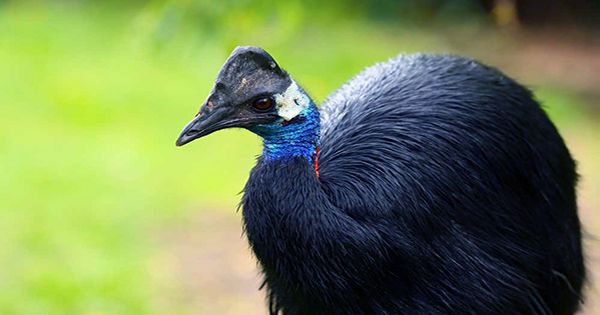Active galactic nuclei (AGN) supermassive black holes that are quickly growing in size are more uncommon than many astronomers had previously believed, according to a University of Kansas assessment of a portion of the galaxy using the James Webb Space Telescope.
The results, obtained with the Mid-Infrared Instrument (MIRI) on the JWST, indicate that our cosmos might be a little bit more stable than previously thought. The study also discusses the difficulties in finding AGN as well as observations of dim galaxies and their characteristics.
In anticipation of formal peer review publication in The Astrophysical Journal, a new study describing the JWST research, carried out under the auspices of the Cosmic Evolution Early Release Science (CEERS) initiative, was made accessible on arXiv.
The research, led by Allison Kirkpatrick, an assistant professor of physics and astronomy at the University of Kansas, concentrated on a region of the cosmos known as the Extended Groth Strip, which is situated between the Boötes and Ursa Major constellations. But previous examinations of the area relied on a less powerful generation of space telescopes.
“Our observations were taken in last June and December, and we were aiming to characterize how galaxies looked during the heyday of star formation in the universe,” Kirkpatrick said. “This is a look back in time of 7 to 10 billion years in the past. We used the mid-infrared instrument on the James Webb Space Telescope to look at dust in galaxies that are existing 10 billion years in the past, and that dust can hide ongoing star formation, and it can hide growing supermassive black holes. So I carried out the first survey to search for these lurking, supermassive black holes at the centers of these galaxies.”
A supermassive black hole is found in the center of every galaxy, but AGN are more spectacular events that are actively attracting gas and displaying a brilliance not found in normal black holes.
Our black hole seems quite uneventful, not displaying much activity. One significant question regarding the Milky Way is whether it was ever active or went through an AGN phase. If most galaxies, like ours, lack detectable AGN, it could imply that our black hole was never more active in the past. Ultimately, this knowledge will help constrain and measure black hole masses, shedding light on the origins of black holes growing, which remain an unanswered question.
Professor Allison Kirkpatrick
Kirkpatrick and many of his astrophysics colleagues believed that the JWST scan, which has a greater resolution, will find a lot more AGN than a previous survey carried out with the Spitzer Space Telescope. However, despite MIRI’s increased strength and sensitivity, the current survey only discovered a small number of extra AGN.
“The results looked completely different from what I had anticipated, leading to my first major surprise,” Kirkpatrick said. “One significant revelation was the scarcity of rapidly growing supermassive black holes. This finding was prompting questions about the whereabouts of these objects. As it turns out, these black holes are likely growing at a slower pace than previously believed, which is intriguing, considering the galaxies I examined resemble our Milky Way from the past. Earlier observations using Spitzer only allowed us to study the brightest and most massive galaxies with rapidly growing supermassive black holes, making them easy to detect.”
Kirkpatrick said an important mystery in astronomy lies in understanding how typical supermassive black holes, such as those found in galaxies like the Milky Way, grow and influence their host galaxy.
“The study’s findings suggest that these black holes are not growing rapidly, absorbing limited material, and perhaps not significantly impacting their host galaxies,” she said. “This discovery opens up a whole new perspective on black-hole growth since our current understanding is largely based on the most massive black holes in the biggest galaxies, which have significant effects on their hosts, but the smaller black holes in these galaxies likely do not.”
Another surprising outcome was the lack of dust in these galaxies, said the KU astronomer.
“By using JWST, we can identify much smaller galaxies than ever before, including those the size of the Milky Way or even smaller, which was previously impossible at these redshifts (cosmic distances),” Kirkpatrick said. “Typically, the most massive galaxies have abundant dust due to their rapid star formation rates. I had assumed that lower mass galaxies would also contain substantial amounts of dust, but they did not, defying my expectations and offering another intriguing discovery.”
According to Kirkpatrick, the work changes understanding of how galaxies grow, particularly concerning the Milky Way.
“Our black hole seems quite uneventful, not displaying much activity,” she said. “One significant question regarding the Milky Way is whether it was ever active or went through an AGN phase. If most galaxies, like ours, lack detectable AGN, it could imply that our black hole was never more active in the past. Ultimately, this knowledge will help constrain and measure black hole masses, shedding light on the origins of black holes growing, which remain an unanswered question.”
Kirkpatrick just secured a sizable amount of additional JWST time to conduct a more thorough MIRI study of the Extended Groth Strip field. Her current paper included about 400 galaxies. Her upcoming survey (MEGA: MIRI EGS Galaxy and AGN survey) will include about 5,000 galaxies. The work is planned for January 2024.

